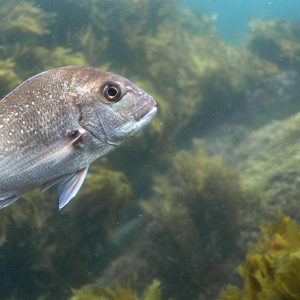When science and decision-making collide in the world of fisheries management, conservation is most often the loser. Fisheries New Zealand recently proposed a 5 to 15 percent cut to commercial catch limits in the northern crayfish fishery and catch increases in southern areas. LegaSea worked with our New Zealand Sport Fishing Council fisheries team and others to submit in support of more conservative decisions than proposed so we can all enjoy a healthy rock lobster fishery in the future.
Despite the optimistic science, most of our crayfish stocks are managed below optimum levels; management is targeted towards satisfying commercial needs while limiting public access to gather a reasonable catch.
The only exception is in the Fiordland area where commercial fishers can’t pot inside the Fiords and release larger crays in favour of the smaller, prime export sized fish. This means good sized crayfish are available when recreational divers are searching for dinner.
In 2018 the northeastern CRA 2 fishery was in crisis mode, requiring drastic action. LegaSea, the New Zealand Sport Fishing Council, New Zealand Underwater, Spearfishing NZ and NZ Angling & Casting Association all supported more cautious management of CRA 2. The CRA 2 area stretches from Mangawhai in the north, through the Hauraki Gulf down to East Cape.
The situation was so dire the Minister only had one realistic option – to cut commercial catch. Our research at the time revealed that 42 percent of respondents wanted the Minister to close the fishery to all harvest for a limited time, to help with a rapid rebuild.
Ultimately, Stuart Nash reduced the commercial limit by 60 percent and the recreational allowance by 75 percent. As a contribution to rebuilding the fishery recreational fishers also offered to cut the recreational daily bag limit from 6 to 3 per person. The reduced bag limit has since been implemented and there are indications that abundance has improved.
Now, the current Minister David Parker has the opportunity to be innovative when making his decisions for the Northland, Otago and Southland (Fiordland) cray fisheries.
Research shows us that reducing commercial catch limits is only one part of the solution. West Australian authorities have successfully used a mix of catch limits and pot limits to control the commercial harvest of crayfish. Each commercial fisher has limited units of effort and catch, and fishing must stop whenever either of these limits is reached.
The pot limit prevents overfishing, and stocks that are rebuilding are protected by the catch limit. This is important because when things go wrong in the pursuit of maximum commercial catch it can take many years to restore the natural balance in marine waters.
We continue to advocate for precautionary management of our precious crayfish. In this review we’re asking the Minister to make conservative decisions to enable marine ecosystems to thrive. Any new decisions will come into effect on 1 April.
More info
8 February 2022 – Crayfish in Northland (CRA 1), Otago (CRA 7) and Southland-Fiordland (CRA 8). Submission here.





